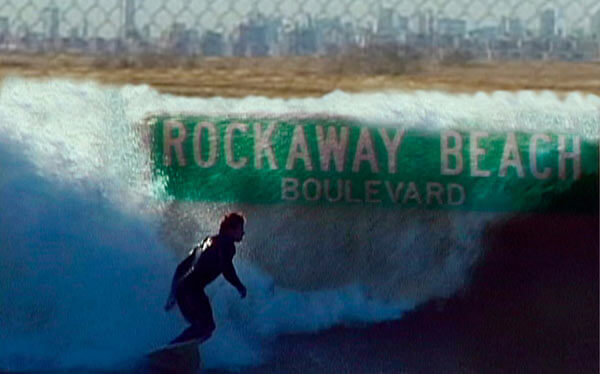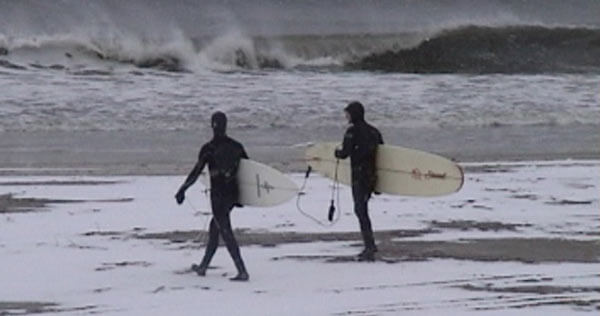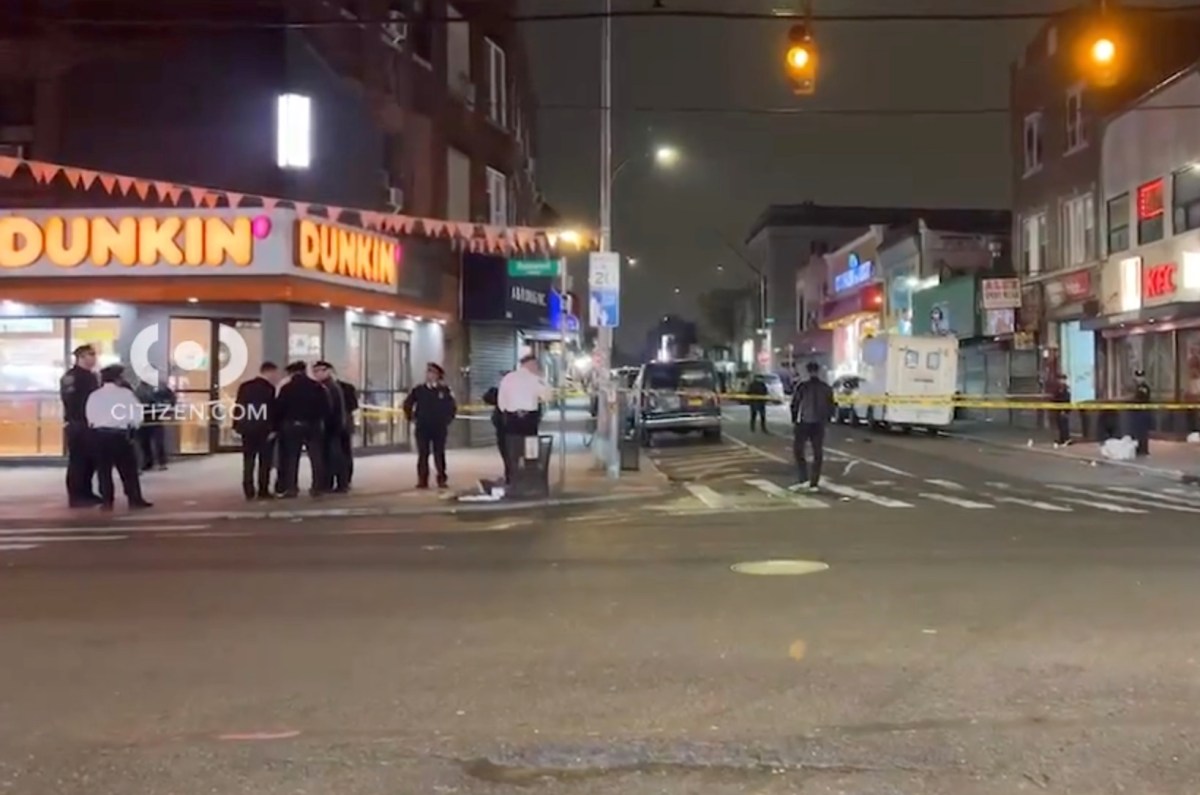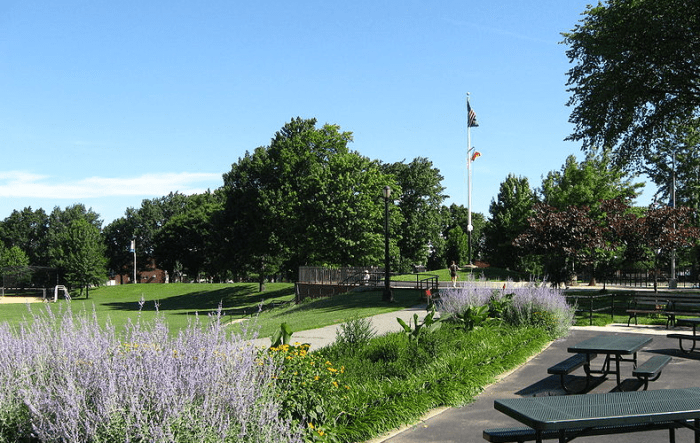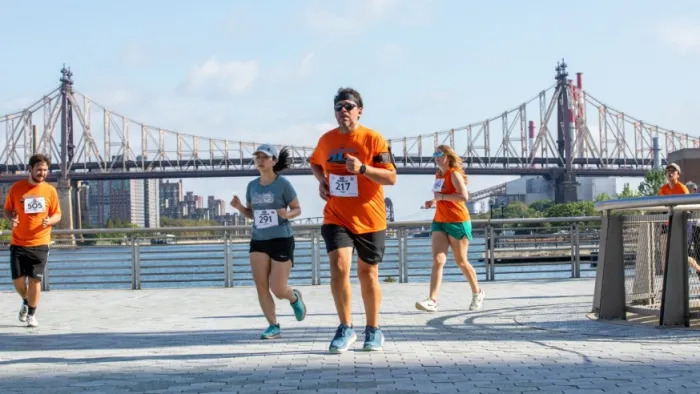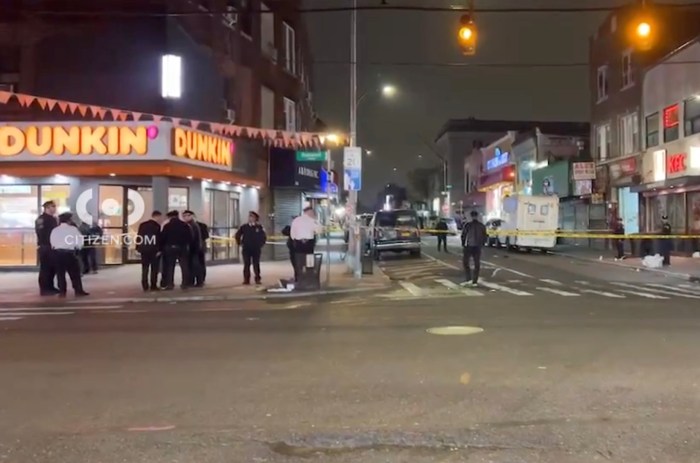By Tammy Scileppi
Just hop on the Far Rockaway-bound A train and you’ll find Rockaway Beach. The mystery of this faraway stop inspired Brooklynite writer-director Kryssa Schemmerling, a New York University filmmaking teacher and mom, to shoot a documentary about the little-known surfing community there.
“What went on out there at the end of the subway line? When I discovered that a lot of people were surfing, I immediately knew I wanted to make a film about them. To me — a native Californian — the idea of surfing in New York City seemed as enchantingly strange as Far Rockaway itself.”
So, she interviewed seven Rockaway Beach surfer buddies, now in their 40s and 50s, who have stayed connected by their shared passion. In search of adrenaline and the perfect wave, “Our Hawaii” chronicles how their young lives intertwined, while they experienced freedom, self-expression and bonding.
Sadly, one of the pioneering Rockaway surfers, a fireman named Henry Miller, died on 9/11. The film is dedicated to his memory.
Another surfer and fireman, Dennis Miller (no relation to Henry), lost most of the men in his firehouse that day, and was saved because he had the day off. He was surfing when the towers fell. He had no idea what was happening when he saw the smoke drifting over Breezy Point. The surf saved his life.
Rockaway was a resort town until the 1970s, when it began a gradual decline toward urban blight. The film was shot against a backdrop of almost vacant land, where some of the many sprawling, turn-of-the-century wood frame houses are now being renovated.
“Far Rockaway is definitely having a renaissance as a summer destination for the young and the hip. From what I hear, the Williamsburg 20- and 30-something’s have been coming out to the beach and boardwalk in droves over the last few years,” said Schemmerling.
A new breed of surfers is enjoying the swells and surge of the tides, according to local business owners. There are more women, there’s more diversity and the summer renters are coming back in droves.
“I know the guys in the film; they’re very nice, but tough,” said surfing instructor Frank Cullen. “The amount of people showing interest in surfing has exploded.”
If you walk to Beach 92nd Street, you can’t miss Rockawayites Steve and son Christian Stathis’ Boarder’s Surf Shop. Steve, a former surfer said, “The area has come back a lot, with new seasonal concession stands on the boardwalk that sell Thai and Venezuelan food; and there’s a popular fish taco joint.”
Steve Stathis said several other area surfers had produced films on the Rockaway surf and the Queens beach life.
“Just the fact that the shop is selling surf films made by local filmmakers, shows their commitment to promoting Rockaway surfing at a more grassroots level,” said Schemmerling.
Surprisingly, in summer the waves are the flattest. “Surfers here live for the early fall hurricanes that generate big swells, and the Nor’easters of winter and spring,” she said. “The surfer buddies used to surf in wetsuits during the winter, in snow and ice, because there were waves. It was cold, but their obsession was such that they would do pretty much anything for waves.”
Though Schemmerling has an obvious infatuation with filmmaking and exploring her Californian roots, she has one striking admission.
“The first question everyone asks me is, ‘Do you surf?’ The answer is ‘no,’ even though I grew up in California. Surfing to me is purely aesthetic: I like to watch it, I find surf culture fascinating, but there is no way I’m going to try to do it myself.”
Schemmerling has written/directed two award-winning dramatic shorts. “The First Seven Years” was on PBS.
“Our Hawaii” will be screening Nov. 5 at 3:20 p.m. during the 2011 Big Apple Film Festival in Theater 2 of Tribeca Cinemas, 54 Varick St., Manhattan.

